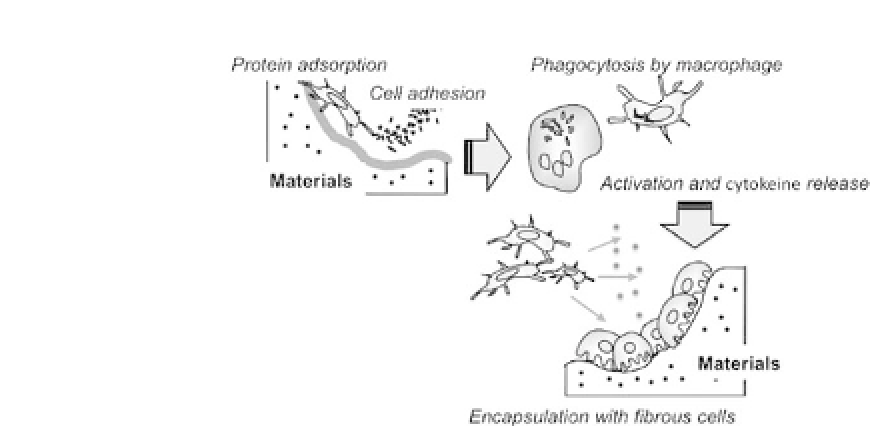Biomedical Engineering Reference
In-Depth Information
Figure 19.1.
Inflammatory reactions observed on material surfaces.
to materials has been previously reviewed in detail.
2
Briefly, pro-
teinadsorptionoccursimmediatelyonmaterialsafterimplantation.
This phenomenon is not observed in the normal healing process.
Many different proteins adsorb onto surfaces with native and dena-
tured structures. Then, various types of cells, such as monocytes,
leukocytes, and platelets, adhere to the surfaces and are activated
to cause subsequent proinflammatory processes. Chronic inflam-
matory reactions at the biomaterial interface ensue, and the frus-
trated macrophages fuse together to form multinucleated foreign
bodygiantcellsthatoftenpersistforthelifetimeoftheimplant.The
end stage of the foreign body reactions involves walling off of the
device by an avascular, collagenous fibroustissue (Fig. 19.1).
Protein adsorption on biomaterials is then the trigger event
of an unregulated foreign body reaction. In addition, secretion of
cytokinesfromadherentcellsprovidesimportantsignalsforinflam-
matory processes.
In this chapter, the suppression of inflammatory reactions with
cells and tissues in contact with 2-methacryloyloxyethyl phospho-
rylcholine(MPC) polymers is summarized.
Cytocompatibility of the MPC polymers is discussed from the
viewpoint of secretion of inflammatory cytokine mRNA from con-
tacting cells. In addition, inhibition of the uptake of MPC poly-
mer particles with phagocytes is described. The foreign body
reaction of MPC polymers when implanted in subcutaneous tissue








Search WWH ::

Custom Search